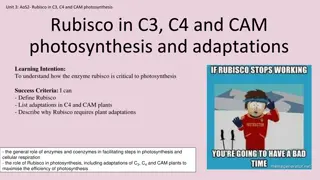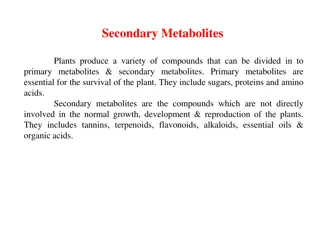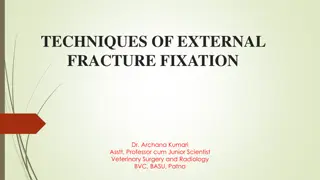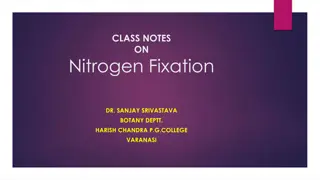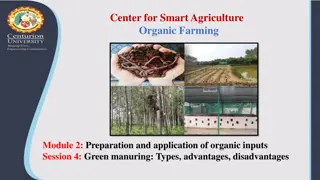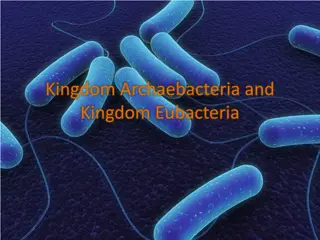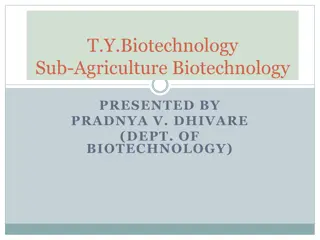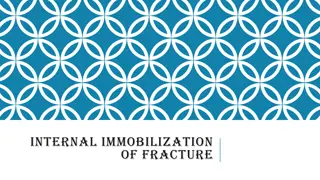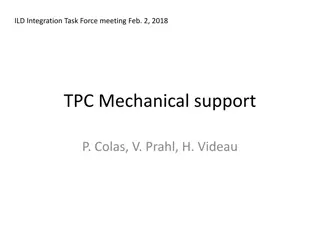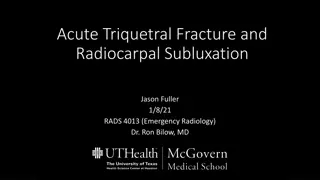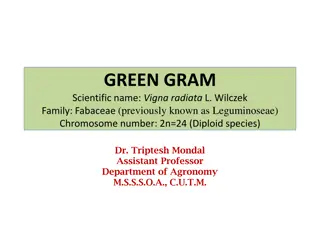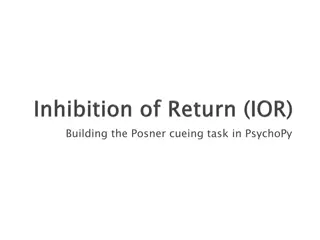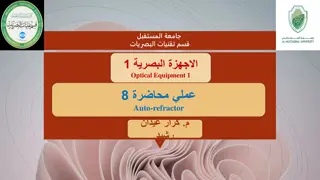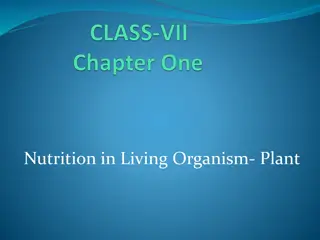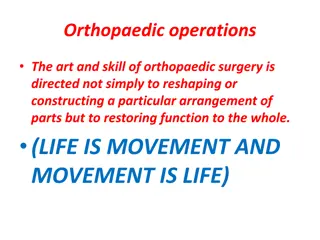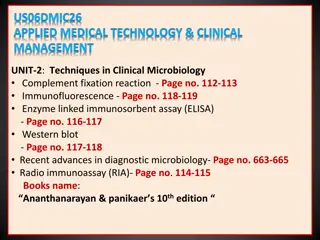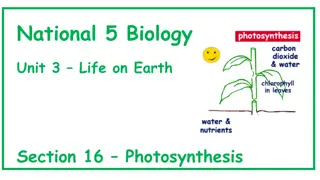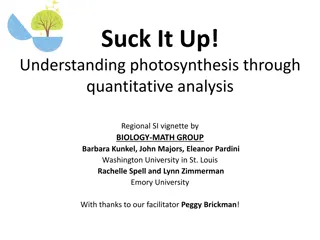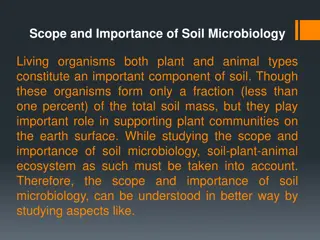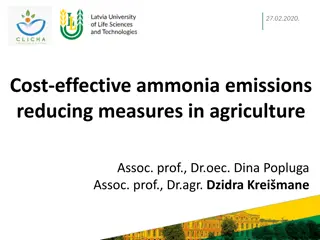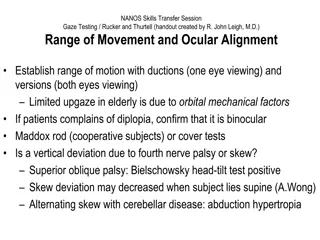Understanding the Role of Rubisco in Photosynthesis
Photosynthesis involves two stages, with Rubisco playing a crucial role in the light-independent stage by assisting in carbon dioxide fixation. It controls the initial reaction, converting CO2 into organic molecules essential for plant growth. Different adaptations in C3, C4, and CAM plants optimize
4 views • 15 slides
Staining techniques
Explore a series of images illustrating various staining techniques used in histopathology, including fixation, different types of staining methods like Gram staining and acid-fast staining, as well as vital and supra-vital staining. Learn about the principles and applications of these techniques in
2 views • 42 slides
_Best Neurosurgeon Doctor In Jaipur || Dr Himanshu Gupta || drhimanshugupta.com
Dr. Himanshu Gupta is known not only for his mastery of surgical techniques, particularly in microsurgery and Endosurgery for brain tumors but also for his exceptional skills in managing patients requiring trauma, brain, and spine surgeries.\n\nHis focus lies in exclusive neurosurgery, making him a
0 views • 7 slides
Understanding Plant Metabolites: Primary vs. Secondary & Their Biological Functions
Primary metabolites are crucial for plant survival, including sugars and amino acids, while secondary metabolites, like tannins, terpenoids, and flavonoids, play diverse roles such as protection from pathogens, pigmentation, and health benefits. Tannins offer antiviral and antibacterial effects, ter
1 views • 7 slides
Techniques of External Fracture Fixation in Veterinary Surgery
Dr. Archana Kumari, Asst. Professor and Junior Scientist in Veterinary Surgery and Radiology, presents various methods of external fracture fixation such as Robert Jones bandage, Ehmer sling, plaster cast, Thomas splints, walking cast, and hanging pin cast. The walking cast is indicated for fracture
1 views • 22 slides
Understanding Nitrogen Fixation Process in Plants
Nitrogen fixation is the conversion of atmospheric nitrogen into ammonia or nitrates by bacteria or industrial processes for plant absorption. Biological and abiological methods exist, with various bacteria and cyanobacteria involved in the process. Symbiotic relationships between these organisms an
1 views • 10 slides
Understanding Green Manuring in Organic Farming: Types, Advantages, and Disadvantages
Green manuring involves incorporating green plant tissues into the soil to enhance fertility and structure. This method includes types like in-situ and green leaf manuring. Desirable qualities of a good green manuring crop are quick growth, nutrient fixation, and deep root systems. Advantages includ
0 views • 7 slides
Contrasting Kingdoms: Archaebacteria vs Eubacteria
Archaebacteria and Eubacteria are two distinct kingdoms of bacteria with unique characteristics. Archaebacteria, originating from Ancient Greek, are ancient organisms thriving in extreme conditions without peptidoglycan in their cell walls, while Eubacteria, the most common bacteria, have peptidogly
0 views • 11 slides
Diverse Methods of Poultry Farming and Agricultural Practices
Poultry farming practices such as organic farming, nitrogen fixation, biodiversity management, and contract farming are discussed. Organic farming emphasizes holistic relationships in agriculture, promoting sustainable production. Nitrogen fixation and biodiversity management play essential roles in
0 views • 20 slides
Nitrogen Fixation and Symbiotic Relationship in Agriculture
Nitrogen fixation is a crucial process where nitrogen is converted into ammonia by nitrogen-fixing bacteria, benefiting plants like legumes. Symbiotic nitrogen fixation involves a mutualistic exchange between plants and bacteria, exemplified by Rhizobium species. This symbiosis leads to the conversi
0 views • 15 slides
Methods of Internal Immobilization for Fracture Repair
Various methods of internal immobilization for fracture repair in animals include intramedullary pinning and nailing, Rush pins, cross pinning, screws, wires, and plate fixation. These methods provide stability and alignment for bone fractures, with success rates depending on the size and weight of
0 views • 21 slides
Understanding Complement Fixation Test (CFT) in Immunology
Complement Fixation Test (CFT) is a key immunological method used to detect specific antibodies in a patient's serum by using complement proteins. This test involves the stages of incubation with antigens, inactivated serum, and complement, followed by the indicator stage using sheep red blood cells
1 views • 17 slides
TPC Mechanical Support Considerations for ILD Integration Task Force Meeting
During the ILD Integration Task Force meeting, discussions revolved around the deformation of the TPC under weight and pressure, fixation points for hanging the TPC, considerations for supporting the TPC with the Cryostat or HCAL, and dealing with potential service clashes. Challenges and preference
0 views • 5 slides
Behavioral Data Analysis During Saccadic Eye Movement Task
Visual systems utilize saccades to focus on objects, impacting temporal perception. This study explores the effects of saccades and stimulus location on perceived time, presenting findings from an experiment on temporal perception mapping with fixed visual duration. The method of psychometric functi
0 views • 12 slides
Unlocking the Clinical Significance of Alloimmunization in Transfusion Medicine
Alloimmunization, a critical side effect of transfusion, has been a challenge in matching phenotypes and genotypes globally. The detection of clinically significant antibodies requires a delicate balance between sensitivity and specificity, considering various controllable and uncontrollable variabl
0 views • 20 slides
Wrist Trauma: Acute Triquetral Fracture and Radiocarpal Subluxation
A 41-year-old female presenting after a high-speed MVC with injuries including a medially displaced radiocarpal subluxation and a comminuted Triquetrum fracture. There is also soft tissue swelling in the distal forearm and wrist. Treatment involves operative management of the fracture and fixation o
0 views • 15 slides
Understanding the Calvin Cycle in Photosynthesis
The Calvin cycle, also known as the light-independent reactions, is a crucial part of photosynthesis where carbon dioxide is converted into glucose. This cycle occurs in the stroma of chloroplasts and utilizes ATP and NADPH from the light-dependent reactions to produce sugars for plants. It consists
5 views • 15 slides
Understanding Specimen Preparation in Electron Microscopy
Living things cannot survive in an electron microscope due to the high temperature generated by the electron beam, vacuum inside the microscope, and need for specimen preparation steps like fixation, dehydration, freezing, cutting, and mounting. Fixation involves stabilizing tissue with chemicals, d
3 views • 10 slides
Overview of Green Gram (Vigna radiata L.): Economic Importance, Origin, and Classification
Green gram, scientifically known as Vigna radiata L., is a highly digestible pulse crop with various uses such as consumption as whole grains or dal, making flour for cakes, and as fodder for cattle. It is grown widely in Southern Asia and other countries, with India being a significant producer. Gr
0 views • 23 slides
Understanding Histological Techniques for Tissue Preparation
Histological technique involves preparing tissue for microscopic examination, aiming to preserve the microscopic anatomy and structure of tissues. The process includes fixation, dehydration, cleaning, embedding, cutting, and staining. Key steps like fixation using fixative materials help prevent aut
0 views • 18 slides
Understanding Visual Impairments and Visual Skills in Students
Exploring the world of visual impairments, this resource delves into how individuals with blindness use their vision, the importance of visual acuity and field, and visual motor abilities. From driving to playing sports, the use of vision is crucial, with visual acuity determining clarity of sight a
3 views • 23 slides
Understanding Biofertilizers and Their Role in Sustainable Agriculture
Biofertilizers contain living microorganisms that promote plant growth by enhancing nutrient availability. Unlike conventional fertilizers, biofertilizers work through natural processes like nitrogen fixation and phosphorus solubilization. Research shows how mycorrhizal fungi can improve crop yield
0 views • 9 slides
X-ray Image-Based Navigation for Hip Osteotomy Experiment
Experiment conducted using a cadaver specimen to assess the feasibility of BB implantation and visibility on X-ray images. The team cleared tissue, drilled burrs in the femur, attached BBs, and evaluated visibility and sizing on C-arm images. Results showed successful BB fixation. Predicted method f
0 views • 8 slides
Understanding the Biological Pump and Carbon Cycle in the Ocean
The biological pump in the ocean involves photosynthesis by phytoplankton, which removes carbon dioxide from the atmosphere, and respiration, where some CO2 is released back. Phytoplankton are crucial in the ocean's carbon cycle, with primary consumers like zooplankton depending on them for energy.
0 views • 20 slides
Building the Posner Cueing Task in PsychoPy
Learn how to create the Posner cueing task in PsychoPy for psychological research. The task involves presenting cues, targets, and response options in a precise sequence to study attentional processes. By following detailed instructions, you can build the task with fixation points, cues, targets, an
0 views • 8 slides
Understanding Auto-refractors in Optical Equipment
An auto-refractor is an automated system that uses light reflected off the retina to measure a patient's refractive error objectively. This technology is fast, safe, and easy to use, providing accurate prescriptions without the need for pupil dilation. While children may find it challenging to sit s
0 views • 15 slides
Understanding Nutrition in Plants and Their Relationship with the Environment
This educational content delves into the various modes of nutrition in plants, including heterotrophic and autotrophic nutrition, as well as saprotrophic and parasitic nutrition. It explains the process of photosynthesis, absorption of water through roots, oxygen production, and symbiotic relationsh
0 views • 13 slides
Orthopaedic Surgery Techniques: Reshaping Function for Restoration
Orthopaedic surgery focuses on restoring function to the whole body through operations on bones and joints, including osteotomy, bone fixation, arthrotomy, arthrodesis, and arthroplasty. The indications and techniques for amputations are also discussed, emphasizing the importance of selecting the ap
0 views • 15 slides
Effect of Microgravity on Nitrogen Fixation in Red Clover Study
Investigating the impact of microgravity on nitrogen fixation in red clover at Johnson County Central High School in Tecumseh, NE. The experiment aims to determine if clover exposed to space conditions fixates nitrogen similar to Earth conditions, crucial for growing food in space. Hypothesis, exper
0 views • 8 slides
Impact of Surgical Treatment on Physiotherapy Outcome in Femoral Neck Fracture Surgery
Early mobilisation post-hip fracture surgery plays a crucial role in patient outcomes. A study at Our Lady of Lourdes Hospital, Drogheda, compared the rehabilitation progress of patients based on the type of surgery received: arthroplasty or internal fixation. Results showed that arthroplasty patien
0 views • 4 slides
Overview of Immunohistochemistry (IHC) in Diagnostic and Research Laboratories
Immunohistochemistry (IHC) is a technique used to detect antigens in tissue sections by utilizing antibodies that bind specifically to target antigens. This method has evolved since the 1930s and plays a vital role in disease diagnosis, drug development, and biological research. IHC combines anatomi
0 views • 19 slides
Clinical Microbiology Techniques: Complement Fixation Test (CFT) in Diagnostic Practice
Complement Fixation Test (CFT) is a key technique in clinical microbiology, utilizing antigen-antibody complexes to fix complement for various immunological reactions. The test involves multiple steps and reagents, with guinea pig serum for complement activation. Standardization is crucial for accur
0 views • 46 slides
Understanding Abiotic Cycles in Ecosystems: Hydrologic, Carbon, Nitrogen, and More
Abiotic cycles play a crucial role in regulating ecosystems. The hydrologic cycle involves processes like evaporation, condensation, precipitation, and transpiration. The carbon cycle relies on photosynthesis, respiration, and human activities like deforestation and burning fossil fuels. The nitroge
0 views • 20 slides
Sylvia Plath: Excavating the Mind and Madness
Delve into the life and struggles of Sylvia Plath, a brilliant poet who grappled with inner turmoil and psychological complexities. Explore the roots of her despair, from personal struggles in a fairy-tale-like life to societal expectations and her complex relationship with her father. Through her w
0 views • 18 slides
Understanding Photosynthesis in Plants
Photosynthesis is a vital process where plants convert light energy into chemical energy to produce their food. This section covers the two-stage process of photosynthesis, including light reactions and carbon fixation, and explores the factors affecting plant growth. Learn about the importance of p
0 views • 42 slides
Exploring Photosynthesis: A Quantitative Analysis Vignette for Biology Students
Delve into the world of photosynthesis with an engaging vignette designed to enhance quantitative literacy skills in biology students. The focus is on understanding the relationship between carbon fixation, plant biomass, and forests as carbon sinks. Through interactive learning goals and objectives
0 views • 24 slides
Understanding the Calvin Cycle in Photosynthesis
The Calvin Cycle is a crucial part of photosynthesis where sugar is synthesized from smaller molecules using ATP and NADPH. It involves three phases: Carbon fixation, Reduction, and Regeneration of the CO2 acceptor. Steps include Carbon Fixation, Reduction, and Regeneration of RuBP. The cycle ultima
0 views • 9 slides
Understanding the Scope and Importance of Soil Microbiology in Ecosystems
Soil microbiology plays a significant role in supporting plant communities and maintaining soil health. Living organisms, both plant and animal types, form only a small fraction of soil mass but are crucial for processes like plant growth, organic matter decomposition, humus formation, and biogeoche
0 views • 14 slides
Cost-effective Measures to Reduce Ammonia Emissions in Agriculture
Cost-effective strategies to reduce ammonia emissions in agriculture are crucial in Latvia, where a significant portion of emissions originate from the agricultural sector. The study focuses on potential measures, such as precise mineral fertilizer application, improved manure management, nitrogen f
0 views • 13 slides
Techniques in Ocular Examination for Gaze and Visual Fixation
Explore various techniques for assessing ocular alignment, range of motion, and eye movement in patients through sessions focusing on gaze testing, visual fixation, saccades, and smooth pursuit. Learn how to identify abnormalities such as nystagmus, saccadic movements, and pursuit asymmetries to aid
0 views • 6 slides
